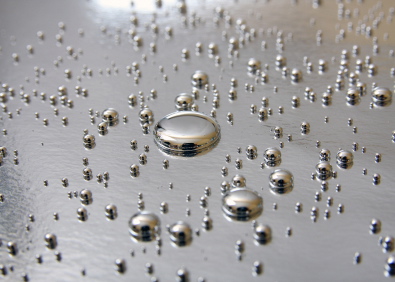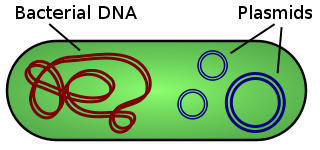
Mercury, also known as quicksilver, is unusual among metals for being liquid or gaseous at room temperature. This also makes it extremely dangerous for most living organisms. Credit: iStock
On the list of substances you really don’t want to mess with, elemental mercury is pretty high up. Inhalation or absorption of the volatile metal can quickly lead to irreversible poisoning. Unfortunately, Hg is also a hallmark of industrial society. Fossil fuel combustion releases small amounts of gaseous, elemental mercury, or Hg0,into the atmosphere. Problem is, it usually doesn’t stay that way for long. Free radicals, such as hydroxyl, strip electrons off elemental mercury, converting the metal into its oxidized form, Hg2+
With two electrons missing, mercury falls out of the atmosphere, entering soils and waterways where it can travel readily into plants, animals and people, hungry to restore its charge balance. It turns out oxidized mercury has a high affinity for sulfur. Sulfur, while not abundant in our bodies like carbon or hydrogen, plays an essential role in protein structure. It forms bridges and cross-links, folding our proteins into the shapes needed to carry out their functions. Once in your bloodstream, mercury can scavenge the sulfur out of your proteins, causing them to unravel.
While most higher life forms have no defenses against the devastating effects of mercury poisoning, bacteria have evolved mechanisms to fight the deadly metal. Mercury-resistant bacteria carry a collection of Hg-detoxifying genes, including the enzyme mercuric reductase, which converts Hg2+ back into gaseous H0. How abundant are these guys, and how did mercury resistance evolve? These questions are important for understanding the natural detoxification of mercury-contaminated environments.
In a study recently published in the journal FEMS Microbiology Ecology, Dr. Annette Møller and colleagues seek answers from an unlikely place: the ice sheets and cold, briny waters of the high arctic. Why study mercury detoxifiers in the Arctic? Mercury deposition at the north pole has been increasing for decades due to mercury-enriched air currents making their way poleward from industrializing Asia. Roughly 300 tons of mercury are now deposited across the Arctic every year.

Industrial activity has greatly increased the amount of mobile mercury cycling through the biosphere.
For their study, Møller and colleagues collected snow, fresh water and arctic sea-ice brine from Station Nord in Northeastern Greenland. To isolate mercury resisters, they grew bacteria in media containing low concentrations of mercuric chloride. Once grown, the researchers extracted DNA from their cultures. From these DNA extracts, they determined the identity of mercury detoxifiers by sequencing the 16S ribosomal RNA gene (a marker used to identify different bacterial taxa) . They also sequenced merA, the gene encoding mercuric reductase. By examining the similarity between merA genes from different bacteria, scientists can study the evolutionary history of mercury detoxification and understand how it is transferred through the environment.
In total, the researchers were able to isolate 72 different mercury-resistant bacteria, roughly 10% of the total culturable bacteria. To their surprise, the scientists only found the merA gene in 32% of their mercury-resistant isolates. This may suggest the presence of novel merA genes that are very different from the ones we already know. It could also mean arctic bacteria have different, entirely novel mechanisms of detoxifying mercury.
What of the merA genes the scientists found? merA, it turns out, is diverse, both in its genetic code and taxonomic distribution. Many distantly related bacteria posses the ability to detoxify mercury. Upon further investigation, the scientists discovered that two-thirds of merA carriers also contain plasmids– tiny circular bits of “mobile” DNA that are physically separate from the bacterium’s main chromosome. Plasmids are important agents of horizontal gene transfer, the release of tiny bits of DNA into the environment, where they can be taken up and used by others. The diverse distribution of merA, coupled with the presence of merA plasmids in some bacteria, suggests mercury-resistance may jump through microbial communities, bypassing reproduction and species boundaries.

Plasmids, small DNA molecules physically separate from a bacteria’s main chromosome, can be used to transfer DNA between different microorganisms. Credit: Wikipedia commons
Thus, arctic microbial communities may adapt to increased mercury concentrations by swapping detoxification genes: much in the same way a piece of code can be shared to patch computer software. This is promising news for folks interested in bioremediation. By releasing mercury detoxifiers in contaminated sites, we may be able to spread the “genetic knowledge”, powering up local microbial communities to combat mercury.
Møller, A., Barkay, T., Hansen, M., Norman, A., Hansen, L., Sørensen, S., Boyd, E., & Kroer, N. (2014). Mercuric reductase genes and mercury resistance plasmids in High Arctic snow, freshwater and sea-ice brine
FEMS Microbiology Ecology, 87 (1), 52-63 DOI: 10.1111/1574-6941.12189